Highlights: Culture Tour of Western Bhutan takes you to some of the best destinations of western Bhutan – The Land of Thunder Dragon. Nestled in the Eastern Himalayas, Bhutan, a princely kingdom, boasts a vibrant culture shaped by the profound teachings of Lord Buddha. Unlike some nations, Bhutan's arts, traditions, and festivals aren't relics but vibrant expressions of a living culture and its villages, people, monasteries, and other monuments stand testimony to the same. The Western region, with its enchanting valleys of Thimphu, Paro, Punakha, Wangdue, and Gangtey (Phobjikha), stands as the prime locale to immerse in Bhutanese cultural and natural splendour.
Day 01 – Paro and Thimphu
Arrive Paro and drive to Thimphu (55 Km) after completing customs and immigration formalities.
Arrive Thimphu and check in at the hotel with the rest of the day at leisure.
Thimphu - this capital city (rather a town) of Bhutan is probably the smallest capital city in the world. Situated on the lap of the mountains Thimphu showcases a very rich cultural heritage and one can certainly feel it by observing its monuments. Though Thimphu has gracefully embraced the influence of modern times it has successfully retained its ethnic and pure traditions.
Evening visit The Memorial Chorten. This tall impressive Tibetan stupa-style architecture with shining spires was built in 1974 as the memorial for the Late Bhutanese King Jigme Dorji Wangchuk who died at the young age of 44 in 1972 in Nairobi, Kenya. One can always see Bhutanese people flocking here to pay homage to their loving belated king who was very popular amongst the people.
Day 08 – Thimphu
Early morning visit the colossal Buddha Dordenma (Buddha Statue), the world's largest seated bronze statue that stands majestically at Kuenselphodrang atop a hill on a 145-acre land gifted by the Fourth King of Bhutan. Surrounded by a conserved 798.4 acres of forest this iconic 201-foot-tall statue was consecrated by His Holiness the Je Khenpo in 2015 to commemorate the 60th birth anniversary of former king Jigme Singye Wangchuck.
Return to hotel for breakfast.
After breakfast continue full-day sightseeing tour of Thimphu by visiting some of the important sites. Textile Museum was founded in 2001 with the royal patronage of Her Majesty Gyalyum Sangay Choden Wangchuck. It is under the management of the Department of Culture, Ministry of Home & Cultural Affairs, Royal Government of Bhutan. The museum showcases exhibitions that provide insight into the prominent weaving techniques, local dress styles, and textiles crafted by both women and men. Tashichho Dzong, Thimphu's iconic landmark meaning 'Fortress of the Glorious Religion.' Originally constructed in the mid-17th century and rebuilt in 1961–62, this structure now hosts the Royal Throne, National Assembly, Central Monastic Body Headquarters, and the Chief Abbot's residence. Immerse in Bhutanese history at this historic site. The Institute for Zorig Chusum, also referred to as the Arts & Crafts School or Painting School, serves as a pivotal educational hub. It provides a comprehensive six-year program covering Bhutan's 13 traditional arts and crafts. One can witness students mastering diverse skills during a visit to this significant learning institution. Centenary Farmers Market more popularly called weekend market is an ideal place to mix with locals and understand their life. Farmers from all over the country come here to sell their farm produce. One can also see or purchase local handicrafts made out of wood and bamboo. Changangkha Lhakhang, perched on a ridge in Thimphu, stands as Bhutan's oldest surviving temple, dating back to the 13th century. Founded by Nyima, son of Phajo Drugom Zhigpo (a Tibetan Buddhist master who started the Drukpa lineage) - it embodies the Drukpa Kagyu tradition. The temple, featuring a remarkable "self-arisen" statue of Avalokitesvara attracts parents seeking blessings for their children. The site of the temple also has a panoramic view of Thimphu town.
In the evening if desired, you can visit the government-run Handicrafts Emporium and Local Crafts Bazaar, which showcases Bhutan's fine traditional arts constituting hand-woven textiles, thangka paintings, masks, ceramics, slate and wood carvings, jewellery, and items made from materials available locally.
Overnight at hotel.
Day 03 – Thimphu to Gangtey
Depart Thimphu by road in the morning for Gangtey (150 Km) stopping by en route at Dochu-la Pass. A scenic drive from Thimphu to Gangtey along the winding hill road that unveils Bhutan’s landscape, with the highlight being the 10,218 feet high Dochu-la Pass adorned with Tibetan Buddhist prayer flags and a cluster of stupas. Marvel at panoramic views of the eastern Himalayas, including Gangkar Phuensum, the highest peak in Bhutan.
Arrive Gangtey and check in at the hotel with the rest of the day at leisure or free for optional activities.
Gangtey or Phobjikha Valley is one of the most pristine and beautiful locales in Bhutan. Situated at an altitude of 3000 meters, Gangtey overlooks the glacial Phobjikha valley which separates the central Bhutan from the western.
Overnight at hotel.
Day 04 – Gangtey
Morning proceed on an excursion to Phobjikha Valley.
Phobjikha Valley, a glacial expanse with a U-shape formed by ancient glacier flow, is also known as Gangtey Valley. Situated at 3000 meters above sea level separating Western and Central Bhutan, surrounded by the Black Mountains. This picturesque valley serves as the winter home for Black-necked Cranes (classified by IUCN as near-threatened species) migrating from Tibet. You can visit the Black-necked Crane Center to learn more about this handsome bird.
Later, visit Gangtey Monastery. Gangtey Monastery, also referred to as Gangtey Gompa, is perched on a hill ridge with panoramic views of the Phobjikha valley. Dating back to the 17th century, it is renowned as one of Bhutan's gompa. As the largest Nyingmapa monastery in the country, it serves as the principal seat for the esteemed Lama Pema-Lingpa, the ninth incarnation. This historic site encompasses a school, meditation center, and residential quarters for monks.
Rest of the day explore the nearby villages or free to relax and sip in the serene environment.
Overnight at hotel.
Day 05 – Gangtey to Punakha
Morning depart Gangtey by road for Punakha valley (80 Km).
Arrive Punakha and check in at the hotel.
Punakha, nestled in a subtropical valley along the Phu Chu and Mo Chu rivers, boasts a picturesque landscape and served as Bhutan's capital until 1955. It continues to be the winter residence of the Je Khenpo (Chief Abbot), offering a charming blend of temperate climate and historical significance.
Afternoon visit Punakha Dzong which is one of the most picturesque Dzongs of Bhutan. Located in triangular land between the confluence of Pho Chu and Mo Chu, it was first built in 1637 AD. However, it had to go through restorations many times due to damages suffered in different accidents. Though it went through the process of restoration a number of times, it has still managed to retain its original character. Mchin Lhakhang in the Dzong premises houses the embalmed body of Shabdrung Ngawang Namgyal the monk who put the foundation of the Dzong. Ugyen Wangchuck, the founder of the Wangchuck dynasty (which rules Bhutan even today) was coronated here.
Also, visit Chimi Lhakhang – built by Lama Drukpa Kunlay a revered monk, this 14th-century temple dedicated to the “Divine Madam of Fertility” is located on a hillock in the middle of rice fields. As per local belief, this temple blesses infertile women with children, therefore women from all over flock here to seek blessings of the Divine Madam of Fertility.
Overnight at hotel.
Day 06 – Punakha to Paro
Morning drive to visit Wangdi Phodrang. Picture perfect Wangdi Phodrang valley located on the junction where Dang Chu meets the Puna Tshang chhu of Tang Chu (rivers) boasts of a Dzong on a spur that commands an impressive view over both the east-west and north-south. Apart from its landscape and Dzong Wangdi Phorang area is very famous for its bamboo work, slate & stone carving.
Continue to drive to Paro (122 Km) stopping by en route at Simtokha Dzong. Located on the outskirts of Thimphu Simtokha Dzong built in 1629 AD is the only fortress monastery in Bhutan that has maintained its original structure. Locals believe that the monastery site was identified to guard the kingdom from a demon that took shelter disappearing in the nearby rock. Besides being a school for religious learning Simtokha Dzong is a premier Dzongkha (Bhutanese National Language) institute.
Arrive Paro and check in at the hotel.
Paro one of the most charming places in Bhutan is one of the most important point in old Tibetan trade routes. Because of its location it has also been strategically important valley in Bhutan, thus it has withheld some of the fierce battles fought for the control over Bhutan. Being the only entry and exit point for air travel in Bhutan Paro still holds a very important place in modern Bhutan.
Overnight at hotel.
Day 07 – Paro
Morning, proceed on a sightseeing tour of Paro visiting some of its important sites. Visit Rinpung Dzong – “A Heap of Jewels” as it is translated into English, this imposing fortress monastery lies on the bank of Paro Chu or Paro River. Built in 1654 AD, which is accessed by a cantilever wooden bridge it has resisted successive Tibetan invasions successfully. The Dzong houses fourteen shrines with their walls covered with impressive colourful paintings depicting visual interpretations of Buddhist folk and religious tales and mandalas. The most unique feature of Bhutanese Dzong architecture is that metal nails are not used to join wooden beams. The Dzong today has around 200 resident monks and apart from being the head of the monk body of the area, Rinpung Dzong also is the administrative office of the Paro district. Ta Dzong – a castle-shaped building built in 1651 AD to keep a vigil at the invading enemies. Today Ta Dzong has been converted into a National Museum which houses an elaborate collection of arts, relics, and Thangka paintings (scroll religious paintings) reflecting rich Bhutanese cultural heritage. Also, visit the Kichu Lhakhang, one of the oldest monasteries in Bhutan, Kishu Lakhang is located on the outskirts of the town. According to local legend, King Gampo miraculously constructed 108 monasteries over the night and Kichu Lhakhang is one of them.
Later walk around the local market.
Overnight at hotel.
Day 08 – Paro
Early morning, drive a short distance to Drukgyel Dzong. This 1644 AD fortress is testimony to the glorious Bhutanese past where its force won a decisive battle with the invading Tibetan army. Thus, it is called Drukgyel Dzong or the ‘Victory of Bhutan’. In 1950 the fortress was destroyed in a fire accident hence today it is in ruins.
After exploring the Dzong start ascending towards Taktsang Monastery on foot. Two/ Three hours of steep ascend will take one to Taktsang or the “Tiger Nest” Monastery which clings to a 3000-foot cliff in the middle of a forest. According to the local belief Guru Padmanabha (referred to as Guru Rinpoche in Tibetan) the founder of Tibetan Buddhism first landed here on a flying tiger.
Return to Paro by late afternoon with the rest of the day at leisure or free for optional activities.
Overnight at hotel.
Day 09 – Depart Paro
In time transfer to airport to board the flight for onward destination.
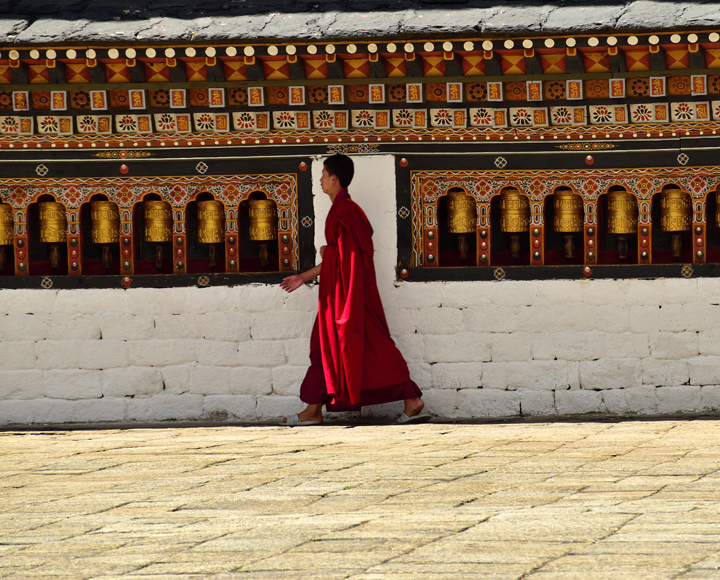
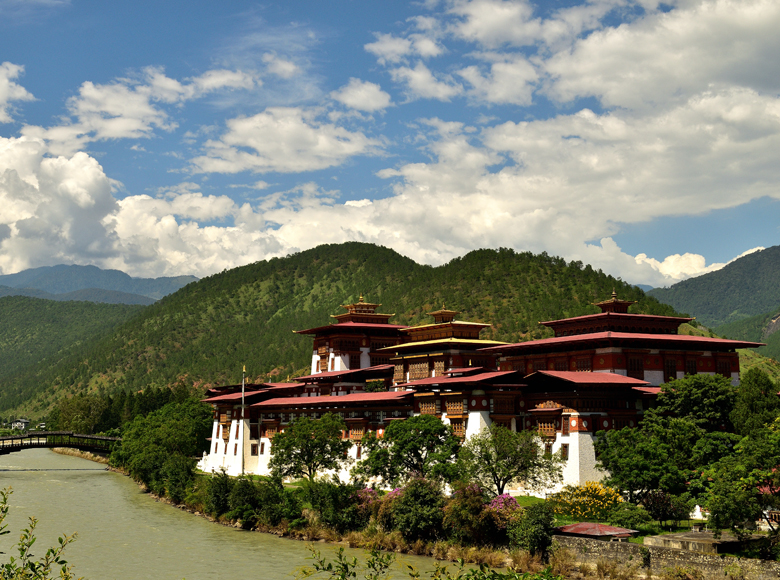
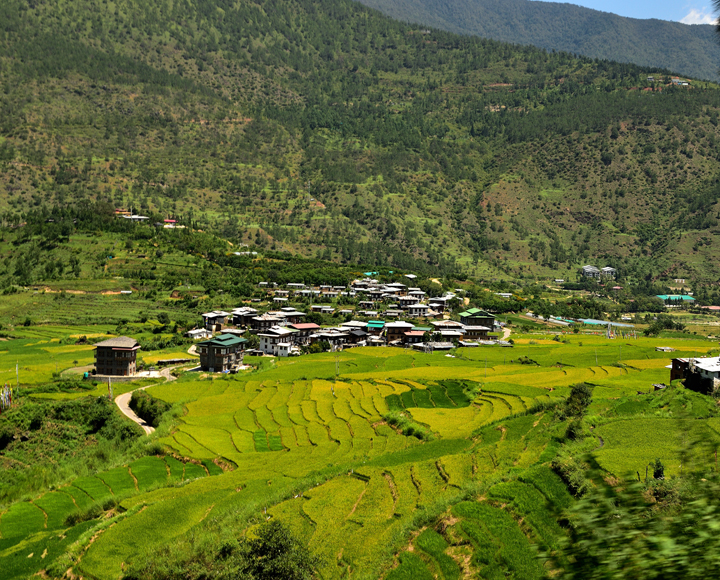
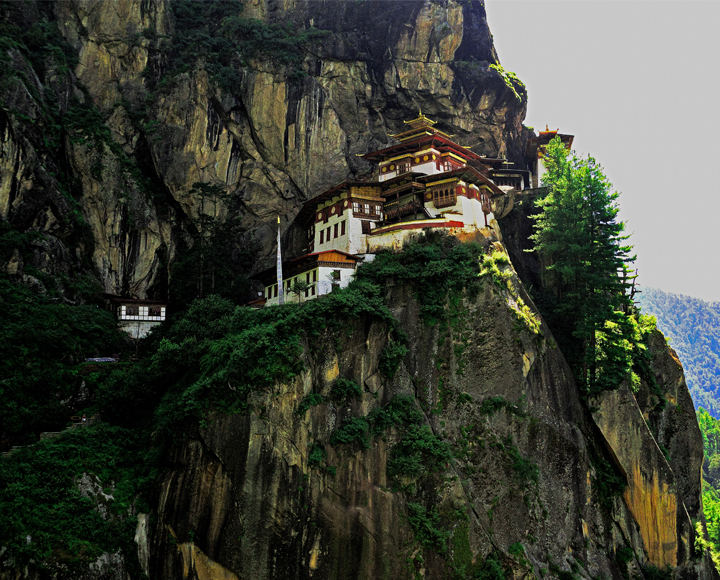
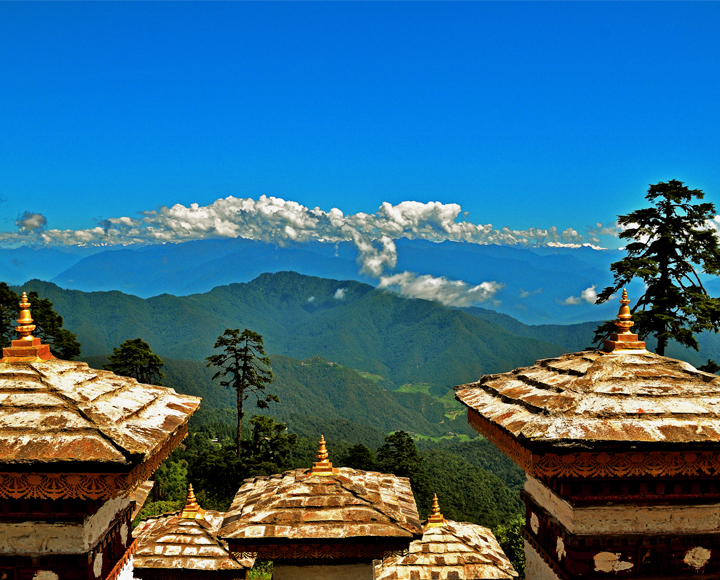
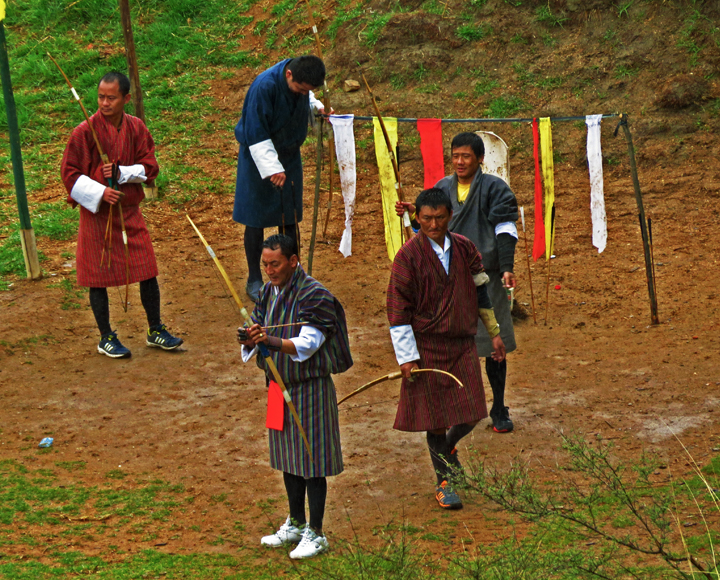
Site by Naulak Web Design.